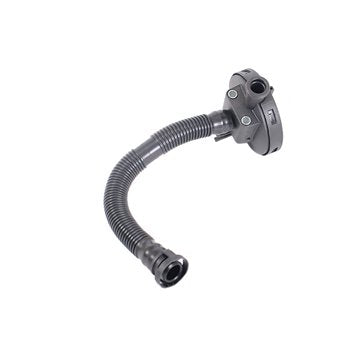Replace a state-of-the-art clp engine for better performance.
Replace a state-of-the-art clp engine for better performance.
Blog Article
How a Clp Engine Can Improve Effectiveness in Numerous Industries
The advent of CLP engines marks a considerable change in operational performance across various markets, driven by their capacity to maximize fuel consumption and lessen downtime. As companies increasingly focus on sustainability along with performance, the role of CLP engines becomes even much more important.
Summary of CLP Engines
CLP engines, or Constant Liquid Propellant engines, represent a significant advancement in propulsion technology, specifically for room applications. These engines use a continuous feed system that permits the continual expulsion of propellant, bring about improved effectiveness and performance contrasted to standard solid or hybrid propulsion systems. By keeping a continuous flow of fluid propellant, CLP engines can accomplish more specific drive control, which is essential for maneuvering spacecraft in different mission circumstances.
The style of CLP engines integrates innovative products and innovative gas management systems. clp engine. This causes decreased weight and increased integrity, vital factors for long-duration room missions. In addition, the constant procedure reduces the threat of combustion instability, an usual challenge in standard rocket engines.

Benefits in Manufacturing
The production of Continual Liquid Propellant (CLP) engines provides a number of noteworthy advantages that enhance both efficiency and cost-effectiveness. Among the key advantages is the streamlined production process, which decreases the complexity associated with traditional propulsion systems. By making use of fluid propellant, makers can accomplish greater accuracy in engine efficiency, leading to optimized power outcome and decreased waste.
Additionally, CLP engines facilitate a greater degree of modularity, enabling easier assimilation into various manufacturing lines. This flexibility can dramatically reduce lead times and boost general functional versatility. Making use of CLP innovation also often tends to lessen the need for considerable upkeep due to less moving components, which translates right into minimized downtime and operational prices.

Applications in Logistics
Leveraging Continual Fluid Propellant (CLP) engines in logistics uses considerable benefits in functional efficiency and dependability. These engines provide a robust solution for various transportation needs, allowing the smooth movement of items across large ranges. The fundamental style of CLP engines permits for regular power output, which converts right into smoother and much more foreseeable transportation timetables.
Among the key applications of CLP engines in logistics remains in heavy-duty products transportation, where they can drive both ground and aerial automobiles. Their capability to maintain high performance under differing tons conditions guarantees that delivery timelines are met, therefore boosting client fulfillment. Furthermore, CLP engines can be integrated right into automated logistics systems, promoting real-time tracking and optimizing course preparation.
Additionally, the longevity of CLP engines minimizes maintenance downtime, permitting logistics business to maximize their functional capabilities. This is specifically useful in warehousing operations, where performance in managing and carrying items is important. As logistics continues to advance, the combination of CLP engines stands for a forward-thinking method that not just enhances efficiency however also supports the sector's growing needs over here for reliability and rate.
Effect On Power Performance
Exactly How do Continual Fluid Propellant (CLP) engines improve power efficiency in transportation? CLP engines make use of a consistent circulation of fluid fuel, enhancing burning processes and preserving a steady drive output. This style decreases energy losses related to typical combustion engines, where fuel shipment can differ and lead to inefficiencies.
The continuous operation of CLP engines permits an extra efficient thermal cycle, leading to greater details impulse contrasted to conventional engines. clp engine. This equates to minimized gas consumption for the exact same quantity of job done, dramatically lowering operational costs across different transportation markets, consisting of aeronautics and maritime sectors
Moreover, the ability of CLP engines to preserve ideal performance under varying tons conditions decreases the requirement for regular acceleration and deceleration, even more enhancing fuel efficiency. Improved energy efficiency not just adds to set you back financial savings yet also leads to lower greenhouse gas emissions, aligning with international sustainability objectives.
Future Trends and Innovations
Arising improvements in Constant Liquid Propellant (CLP) engine innovation guarantee to transform the landscape of transportation efficiency and sustainability. As industries pivot towards greener choices, CLP engines stand at the leading edge, integrating innovative products and style approaches that enhance efficiency while decreasing ecological effect.
One of one of the most encouraging patterns is the adoption of crossbreed systems that integrate CLP engines with renewable resource resources. This synergy can optimize fuel intake and minimize emissions, straightening with worldwide sustainability goals. Developments in computational liquid dynamics (CFD) are facilitating the layout of more aerodynamically reliable engines, leading to decreased drag and boosted fuel effectiveness.
Additionally, the growth of wise surveillance systems is readied to boost operational performances. These systems leverage information analytics and IoT technology to enhance engine efficiency in real-time, ensuring that the engines operate within their most reliable parameters.
As research study proceeds to explore different propellant formulations-- such as biofuels and synthetic gas-- the future of CLP engines looks promising. By utilizing these developments, sectors Learn More can not just improve their effectiveness yet also contribute dramatically to a cleaner, more sustainable future in transport.
Verdict
In conclusion, CLP engines represent a significant development in efficiency across multiple industries. The assimilation of innovative products and fewer moving parts minimizes maintenance needs, while positioning with sustainability goals positions CLP engines as a pivotal technology for the future.
Report this page